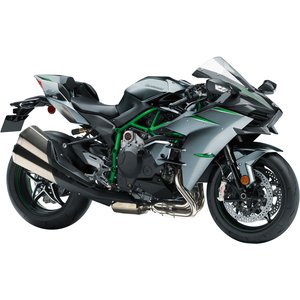Kawasaki Ninja H2 (2015-2022): A Supercharged Symphony of Speed
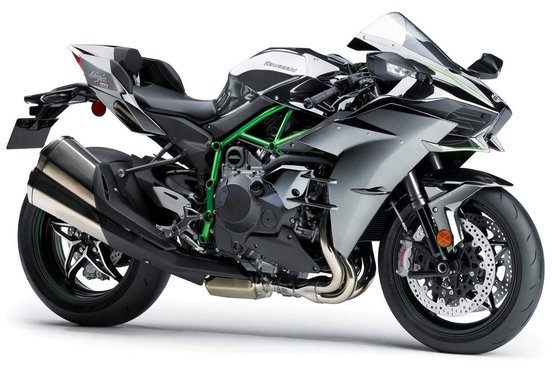
Introduction
When Kawasaki unleashed the Ninja H2 in 2015, it wasn’t just launching another sportbike – it was declaring war on the limits of motorcycle engineering. Built as a collaborative effort across Kawasaki Heavy Industries’ aerospace, gas turbine, and motorcycle divisions, the H2 redefined hypersport performance with its centrifugal supercharger, aerospace-grade aerodynamics, and a chassis designed to harness chaos. For eight years, this mechanical predator dominated the “hyperbike” segment, offering riders a visceral experience that straddles the line between street legality and track weaponry. Having spent time with this forced-induction marvel, I can confirm: the Ninja H2 isn’t just ridden – it’s experienced.
Design & Aerodynamics: Form Follows Fury
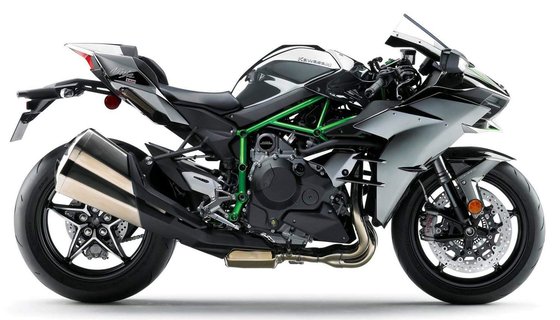
From the moment you approach the Ninja H2, its “Intense Force” design philosophy commands attention. The mirror-coated black paint (a Kawasaki-exclusive finish with self-healing properties on later models) isn’t just cosmetic – it’s a liquid obsidian shell that seems to absorb light until sunlight reveals its hidden depth. The aerodynamic profile, developed with input from Kawasaki’s aerospace engineers, features functional elements rarely seen on production bikes:
- Chin Spoiler: Generates downforce at speed (145 km/h/90 mph+)
- Gurney Flap Mirror Mounts: Miniature wings creating front-end stability
- Ram Air Duct: Feeds 200+ liters of air/sec to the supercharger
The riding position strikes a fascinating balance – slightly more upright than a traditional supersport (32.5-32.7" seat height) but with rearset pegs that lock your legs into the tank’s aggressive contours. Kawasaki’s obsession with heat management is evident in the trellis frame’s open design, which lets engine heat dissipate rather than roast the rider.
Engine & Performance: The Forced-Induction Heart
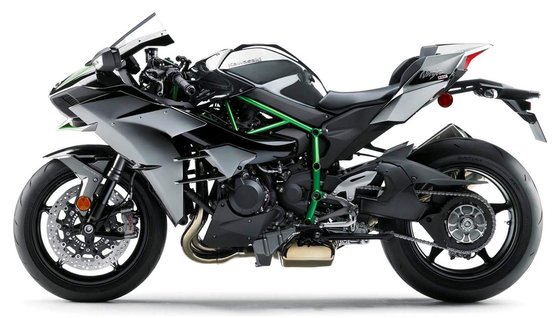
At the core beats a 998cc inline-four unlike any other. The centrifugal supercharger – designed in-house and spinning at up to 130,000 RPM – forces 2.4x atmospheric pressure (35 psi) into the combustion chambers. The numbers tell part of the story:
| Specification | 2015-2019 | 2020-2022 | |---------------|-----------|-----------| | Power | 200-210 HP (149-157 kW) | 228 HP (170 kW) | | Torque | 98-104.5 lb-ft (133-141.7 Nm) | 104.5 lb-ft (141.7 Nm) | | Redline | 14,000 RPM | 14,500 RPM | | 0-100 km/h (0-62 mph) | 2.8 sec (est.) | 2.6 sec (est.) |
But raw stats can’t capture the sensory overload. Throttle response is shockingly linear for a forced-induction engine, thanks to dual injectors per cylinder and electronic throttle valves. Below 6,000 RPM, it’s docile enough for city traffic. Past 8,000 RPM, the supercharger’s whine crescendos into a metallic scream as the horizon rushes toward you with warp-speed urgency. The quick-shifter (standard post-2018) delivers rifle-bolt upshifts, while the assist/slipper clutch tames downshift chaos.
Electronics Suite: Taming the Beast
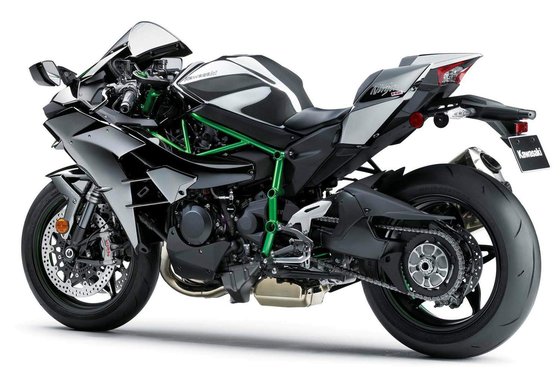
Kawasaki’s electronic nannies transform this 524-lb (238 kg) missile into a (somewhat) approachable companion:
- KTRC (Traction Control): 9 modes from “Let’s powerslide” (Mode 1) to “Monsoon-safe” (Mode 3)
- KIBS ABS: Monobloc Brembo Stylema calipers (330mm discs) with cornering-aware braking
- Launch Control: Three settings for dragstrip-perfect starts
- Öhlins Electronic Steering Damper: Auto-adjusts damping based on speed
- Rideology App: Post-2019 models sync with smartphones for telemetry
The TFT dashboard (2020+) deserves special mention – its bank angle recorder and G-force meter turn every ride into a data-driven thrill audit.
Handling & Chassis: Ballet in a Hurricane
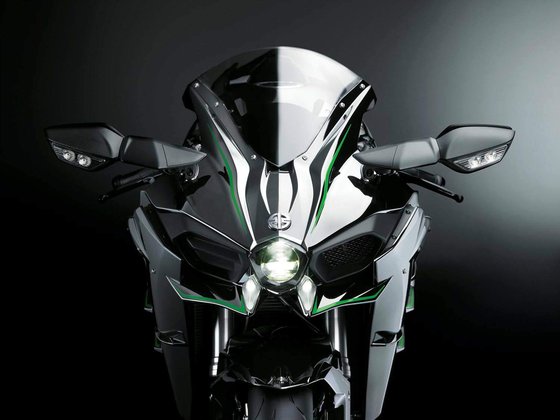
The trellis frame and single-sided swingarm (a Kawasaki first) create a chassis that’s both stiff and communicative. With a 57.3" (1,455mm) wheelbase and 24.5° rake, the H2 carves corners with unexpected agility for its class. Key components:
- Front Suspension: 43mm KYB AOS-II forks with DLC coating
- Rear Suspension: Öhlins TTX36 shock (22-way adjustable)
- Tires: Bridgestone Battlax RS11 (120/70-17 front, 200/55-17 rear)
At legal speeds, the steering feels slightly heavy – a trade-off for stability at 200+ km/h (124+ mph). But load the pegs, and the bike arcs into corners with laser precision. The real magic happens accelerating out – the supercharger’s mid-range punch slingshots you toward the next apex.
Competition: The Hyperbike Arena
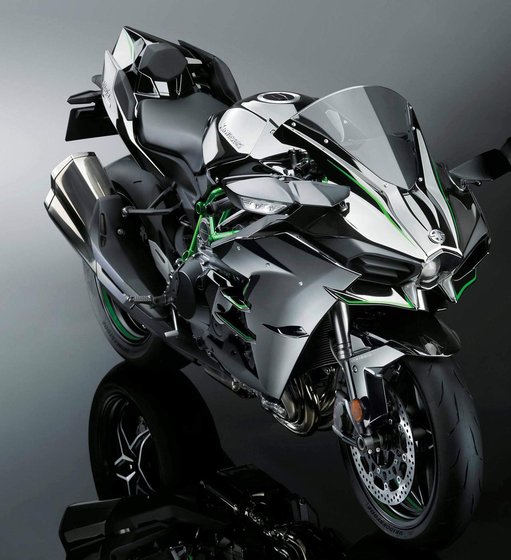
The Ninja H2’s supercharger gives it unique advantages against key rivals:
- Ducati Panigale V4 (205 HP): More agile track weapon, lacks H2’s brutal mid-range
- BMW S1000RR (207 HP) Superior electronics, less theatrical power delivery
- Suzuki Hayabusa (190 HP): Top-speed king, but 80 lbs heavier
- Aprilia RSV4 1100 (217 HP): Closest in character, needs high RPMs to shine
Where the H2 dominates is real-world acceleration. Below 180 km/h (112 mph), nothing in its class matches the supercharger’s relentless thrust. It’s a bike that makes highway on-ramps feel like launch pads.
Maintenance: Keeping the Boost Alive
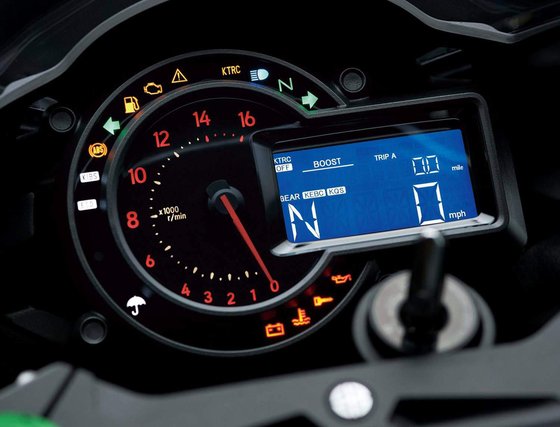
While robust, the H2 demands meticulous care. MOTOPARTS.store recommends:
- Supercharger Maintenance: Clean air filters every 3,000 km (1,864 mi), inspect impeller annually
- Oil Changes: Full synthetic 10W-40 every 6,000 km (3,728 mi) – 4.4L with filter
- Chain Care: RK GB50GSV2 chain with 18/44 sprockets (upgrade to DID 525ZVM2 for hard riding)
- Brake Upgrades: Brembo SRB-19 pads for track days, Galfer stainless lines
- Cooling System: Engine Ice coolant swap every 2 years
Post-ride rituals matter. Let the turbocharger-coolant pump run until the fan stops (about 90 seconds) to prevent heat soak.
Conclusion: The Last Analog Hyperbike
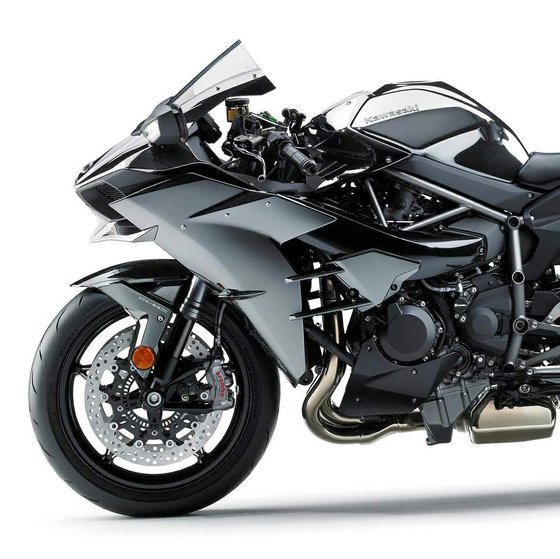
In an era shifting toward electric powertrains, the Ninja H2 (2015-2022) stands as a glorious monument to internal combustion excess. It’s not perfect – fuel economy dips to 8.5L/100km (27.7 mpg) when ridden hard, and the riding position tests endurance. But these are quibbles in the face of a machine that delivers aerospace thrills on public roads. For those who’ve always dreamed of straddling a rocket, the H2 remains the closest thing to street-legal lunacy. And with MOTOPARTS.store’s curated selection of upgrades, you can ensure this Kawasaki icon ages like fine wine – fast, loud, and utterly intoxicating.






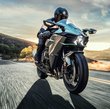




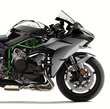
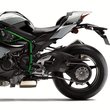
Specifications sheet
| Engine | |
|---|---|
| Stroke: | Four-stroke |
| Max power: | 228 kW | 306.0 hp |
| Max torque: | 142 Nm |
| Fuel system: | DFI® with 50mm throttle bodies (4) with dual injection |
| Max power @: | 11500 rpm |
| Displacement: | 998 ccm |
| Max torque @: | 11000 rpm |
| Supercharger: | Centrifugal, Kawasaki-designed |
| Configuration: | Inline |
| Compression ratio: | 8.5:1 |
| Lubrication system: | Forced lubrication, wet sump with oil cooler |
| Number of cylinders: | 4 |
| Dimensions | |
|---|---|
| Wheelbase: | 1455 mm (57.3 in) |
| Wet weight: | 240 |
| Seat height: | 825-830 mm (32.5-32.7 in) |
| Overall width: | 810 mm (31.9 in) |
| Overall height: | 1130 mm (44.5 in) |
| Overall length: | 2085 mm (82.1 in) |
| Ground clearance: | 140 mm (5.5 in) |
| Fuel tank capacity: | 19 L (5.0 US gal) |
| Drivetrain | |
|---|---|
| Clutch: | Wet multi-disc, assist & slipper |
| Final drive: | chain |
| Transmission: | 6-speed, cassette-style with dog-ring design |
| Rear sprocket: | 44 |
| Front sprocket: | 18 |
| Electronics | |
|---|---|
| Lighting: | Full LED system |
| Rider aids: | KCMF, KTRC (9 modes), KLCM, KIBS ABS, Öhlins ESD |
| Instrumentation: | TFT color display with smartphone connectivity |
| Maintenance | |
|---|---|
| Rear tire: | 190/55-z-17 |
| Engine oil: | 10W40 |
| Front tire: | 120/70-z-17 |
| Brake fluid: | DOT 4 |
| Spark plugs: | NGK SILMAR9E9 |
| Spark plug gap: | 0.8 |
| Coolant capacity: | 2.5 |
| Forks oil capacity: | 1.2 |
| Engine oil capacity: | 4.4 |
| Engine oil change interval: | Every 5000km or 2 years |
| Valve clearance (intake, cold): | 0.15–0.22 mm |
| Valve clearance check interval: | 24,000 km / 15,000 mi |
| Valve clearance (exhaust, cold): | 0.33–0.38 mm |
| Recommended tire pressure (rear): | 2.9 bar (42 psi) |
| Recommended tire pressure (front): | 2.5 bar (36 psi) |
| Chassis and Suspension | |
|---|---|
| Rake: | 24.4° |
| Frame: | Trellis, high-tensile steel with swingarm mounting plate |
| Trail: | 101.6 mm (4.0 in) |
| Rear brakes: | Single 250mm disc, 2-piston caliper (ABS) |
| Front brakes: | Dual 330mm semi-floating discs, Brembo Stylema® 4-piston radial calipers (ABS) |
| Rear suspension: | Öhlins TTX36 monoshock, 22-way compression/rebound adjustable |
| Front suspension: | 43mm inverted KYB AOS-II fork, adjustable rebound/compression damping |
| Rear wheel travel: | 135 mm (5.3 in) |
| Front wheel travel: | 119 mm (4.7 in) |



